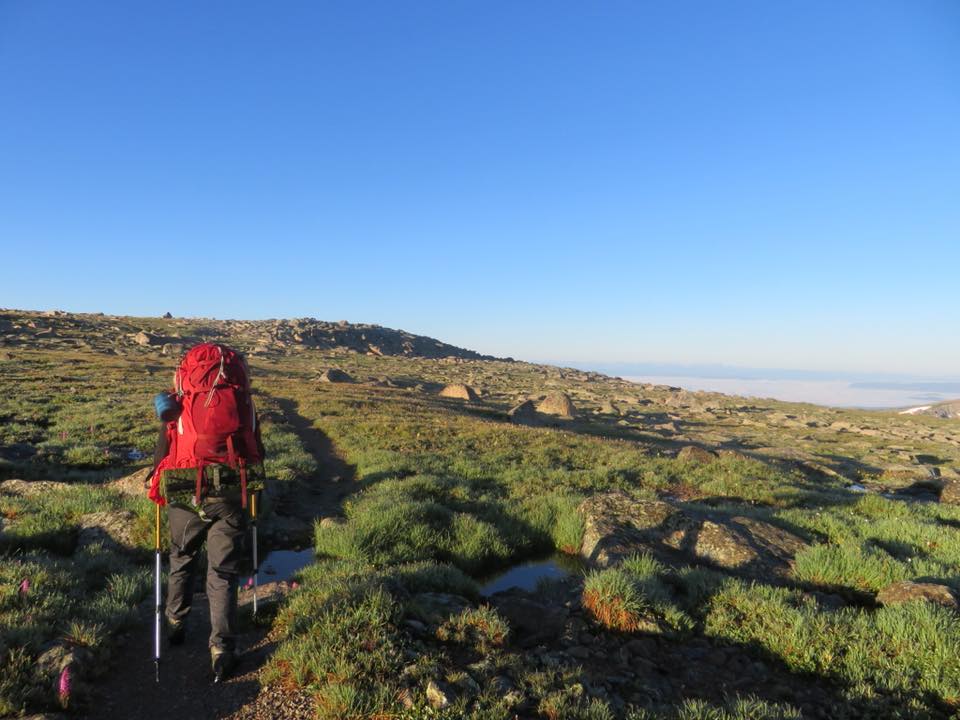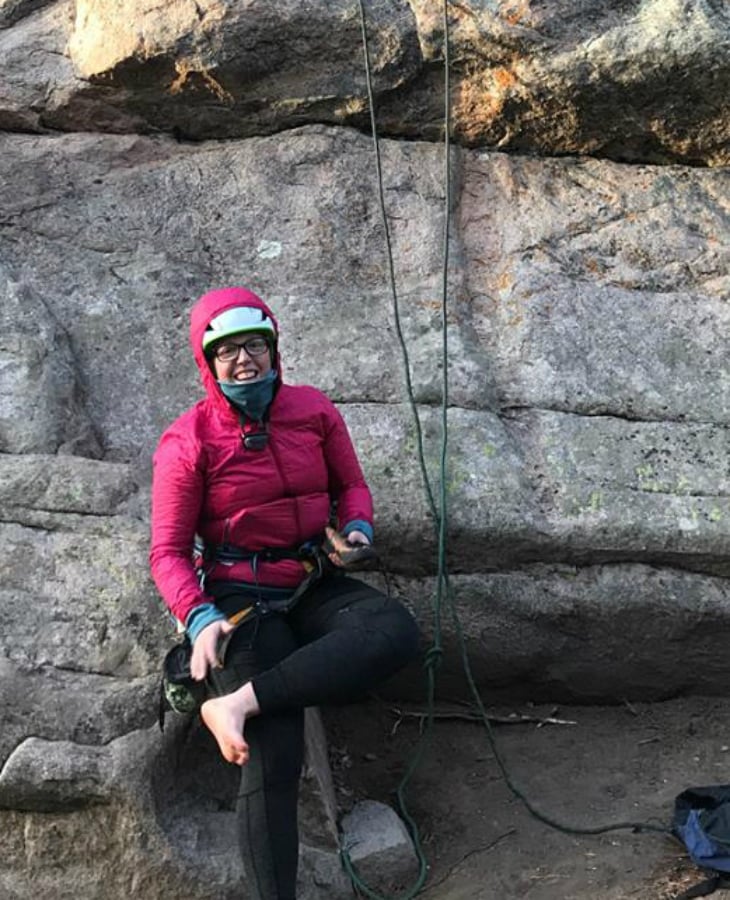How to Take Care of Your Feet in the Backcountry

Your feet.
It is a constant battle to take care of your feet in the backcountry. To keep them warm, dry, blister and pain free. It is a battle each person takes on when they make the choice to go into the wilderness on foot.
And trust me, I get that the struggle is REAL. I go through blister systems like water goes through mesh. Every time I buy a pair of boots I pray that they don’t give me blisters. Because by now I have come to realize that my feet get blisters. All the time. And seriously after almost 16 years guiding, I have a few tips and tricks that I have learned the hard way, so you don’t have to!

Be One with your Feet
The first “Step” in this whole process is to know your feet. Just like each person is uniquely and fearfully made, each pair of feet is unique! So when you are looking at systems, new boots, or whatever ped-shed you are wearing it is important to know thyself.
Because truly, how can you expect someone else to tell you what you need, if you don’t have the basic awareness of your own two feet? Take the time to understand your own feet:
- What’s your gait like? Fast, long, short, uneven, etc.
- What part of your foot you step on most (outside, inside, ball, heel, etc)?
- Do you spread your toes for balance?
- Do you have a high or low arch in your foot?
- Do you have a high or low volume foot? (ie how much space in a shoe does your foot need?)
- Do you have a wide or narrow heel?
- Do your feet sweat a lot? Or do they stay really dry?
All these questions are a great place to start in getting to know your own feet and an essential process in finding shoes and boots that will help you thrive, rather than just survive.

Plan Ahead and Prepare
While it is certainly the most important of the Leave No Trace Principles -in my book at least- it is definitely applicable when it comes to foot care.
You do not – I repeat: DO NOT! – want to purchase new hiking shoes or boots a mere days before you go on your adventure. This is a recipe for disaster, pain, and suffering! And, you can also do some serious damage to yourself.
Plan ahead and purchase your footwear several months before your intended trip. Then, take small day hikes to test drive them. Or, if you are unsure if they will work well for the long haul, take your boots and a weighted pack to the gym and use the stair stepper or treadmill to test them out. In this way, you will more likely be able to return them.
*Pro tip: most outdoor footwear stores will not accept boots or shoes that have been worn outside. So do your training indoors and within 30 days, and you will have a higher success rate in returning those boots or exchanging them.*
If you feel a “hot spot” or a spot that is pinching or uncomfortable. Stop. Expose. Treat. Or SET if you will. This is your body telling you something isn’t right. So SET aside your pride and take a moment to do some self care. It may seem inconvient to stop at that moment, but it is far more inconvient when you can’t go the miles because of something that was avoidable.
Lastly, have a foot care system packed. There are many ideas out there of what works. And honestly, I have tried them all. Literally. The things that I have found work well for me and I keep in my foot care pack are these:
ArmaSkin Liner Socks
These socks are a compression sock that have a silicone lining on the interior of the sock that help it stick to your skin.
Doesn’t matter if your feet are wet, sweaty, cold, or whatever these socks don’t move once they are on your feet. Which in turn significantly reduces friction and opportunities for hot spots and blisters to form.
I will never go hiking without these socks ever again. They are amazing and make my blisters and fear of blisters burn away like the morning fog.
Leukotape
This tape is better than any other tape I have used for treating hotspots or blisters. Bar none. It is super sticky and has a softer side that faces outwards to reduce friction on the spot that already is having issues.
This tape is bombproof and stays in place so well! I used it while hiking in canyon country of Escalante in and out of creeks and rivers, scrambling up canyon walls, and so much sand that it gets into your imaginary friend.
This tape stayed in place for three days before I removed it to check on the blister that was there. I’m telling you, this is a must have in every hikers foot care kit!
Duct Tape
When you are in the moment and let’s say, you don’t have either of the first two items handy, Duct Tape will work well. I have used duct tape more times than I can count on my heels to reduce friction within a wool liner and wool hiking sock.
The great part of duct tape, is that it is really affordable and something that you will likely have with you on your trip anyway. So it is accessible and reduces friction really well! Plus, I mean who doesn’t like teal and magenta cheetah print as a fashion accessory?
The downside to duct tape, is that it can also create more issues. If your feet get super wet or sweaty, the sticky layer will not stick to your skin and has the potential to bunch up within your sock layers. And thus creating even more issues with your hotspots and even making new ones.

All in all, you were made to thrive not simply endure on your backcountry adventures. And keeping your feet heathy is a surefire way to ensure that you start and end your trip smiling, and excited to go on your next one!
These are just a few tips and tricks, and there are many out there! But truly from a long time blister sufferer, take it from me, that prevention and planning are guaranteed to ensure that your feet will carry you through the paths you travel.
Happy Feet = Happy Trails!
WANT TO EXPERIENCE MORE?
Check out an opportunity to fully unplug and go on a wild adventure – connecting with God, others, and your purpose.
Laura Albert
Laura has been full time with SROM since February of 2017. In addition to writing, she and her dog Lily enjoy going on adventures and pushing the limits of “the norm” in their daily rhythms. Most recently that includes the building of their own Tiny House on wheels this summer.
To learn more about about Laura, click here.



